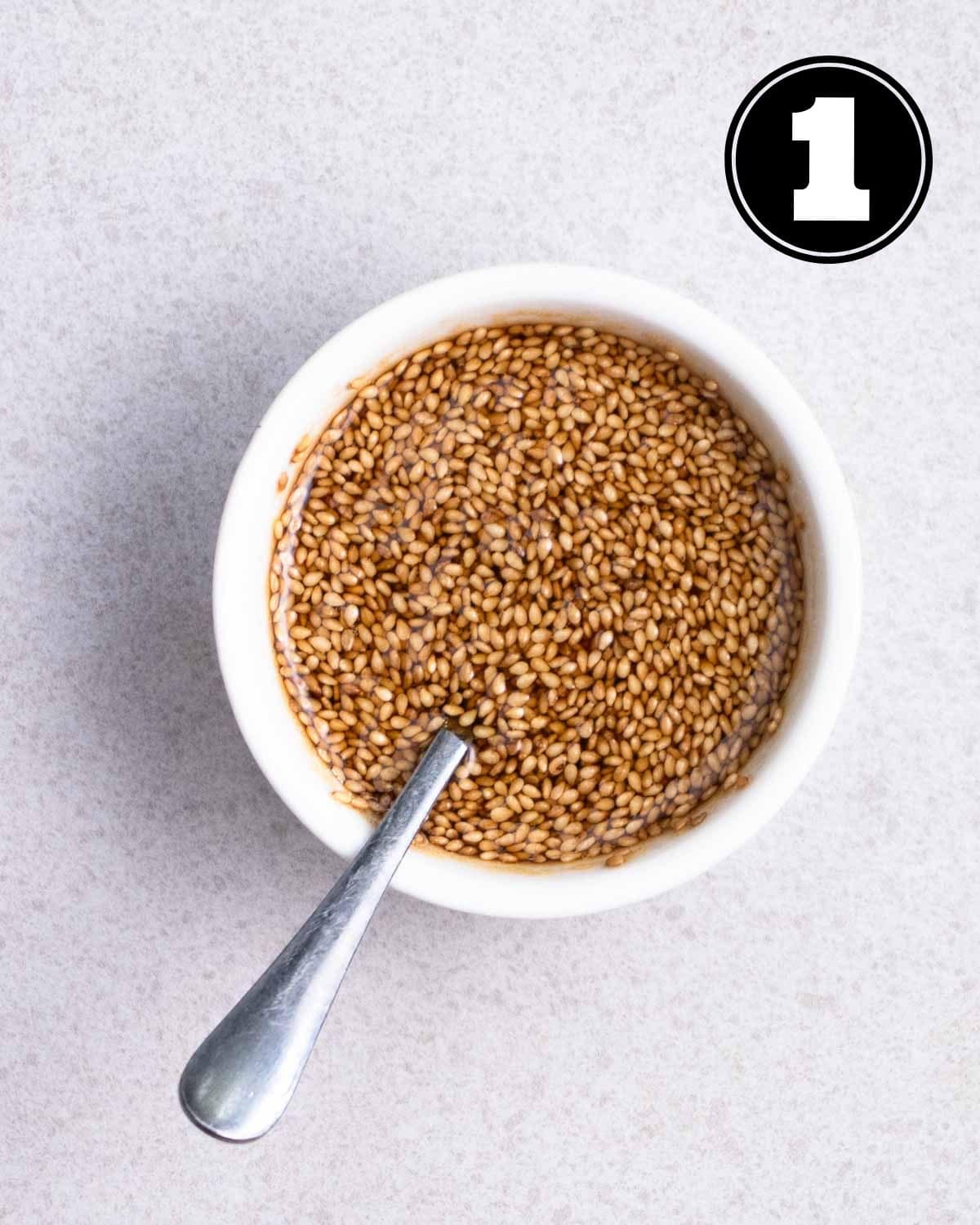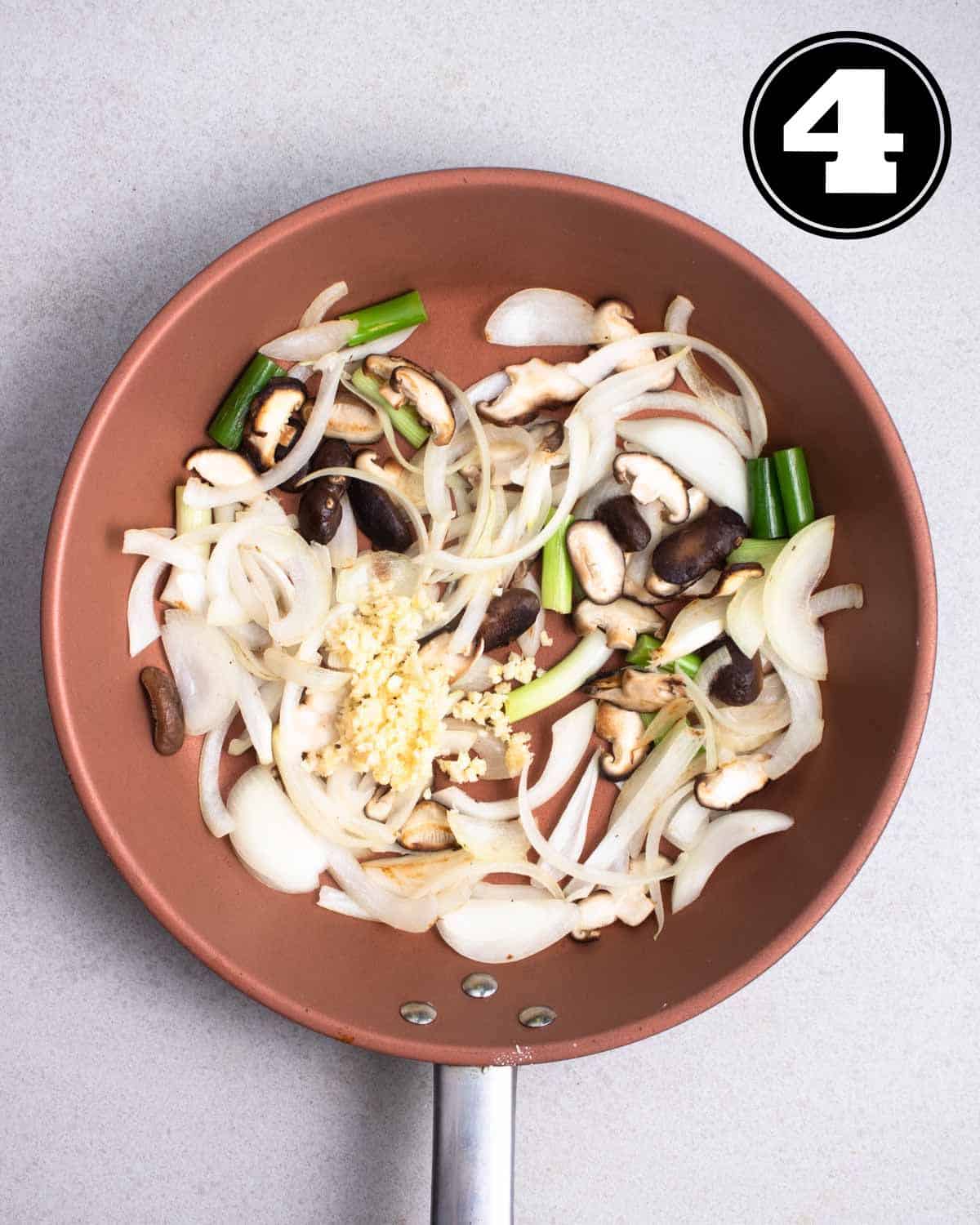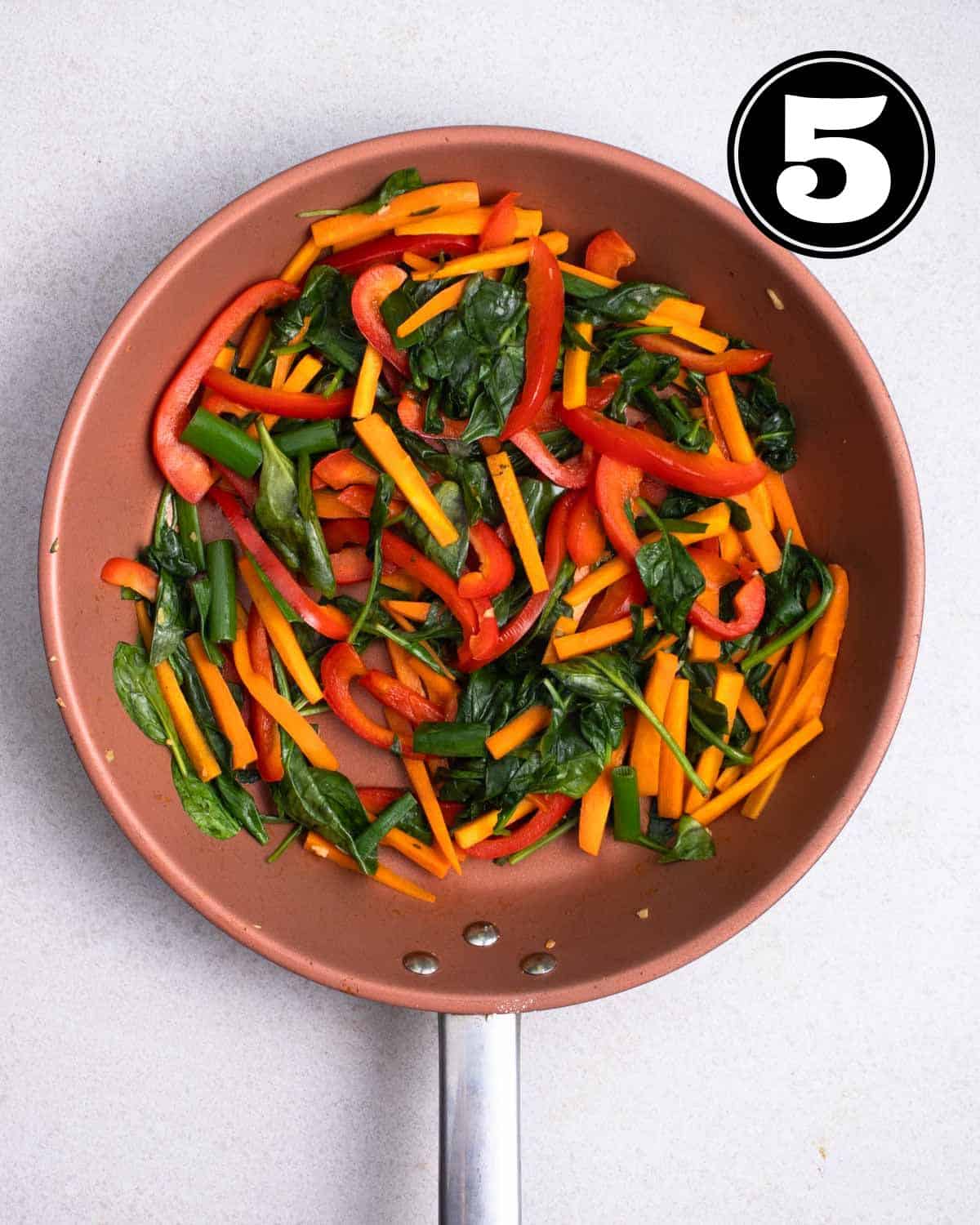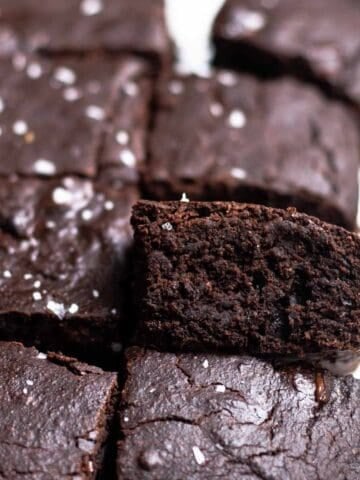Vegan japchae is a vibrant and comforting Korean noodle dish packed with flavors. With chewy noodles, crisp veggies and pan-fried tofu tossed in an umami sauce, it's a nourishing dish that is both delicious and wholesome.
You can serve it as a side (banchan) with vegan bibimbap, kimchi fried rice, or tofu bulgogi, or as a main dish with a refreshing glass of lemon barley water.

Vegetarian japchae is one of my go-to comfort meals, right up there with recipes like my vegan jajangmyeon, tofu peanut noodles, and spicy vegan tteokbokki. What I love most is how low-effort this dish is. Even after a long day of work, I can whip up this recipe with minimal fuss.
Plus, the leftovers taste even better the next day, making it the perfect packed lunch!
Jump to:
💚Why you will love vegan japchae
- Vibrant, refreshing, and packed with flavors
- A simplified version that comes together in 40 minutes
- Great for potlucks, parties, or gatherings
- Naturally vegan and gluten-free
- Meal-prep friendly and is great as a packed lunch!
🍄What you will need


- Sweet potato noodles (Dangmyeon) - Made from sweet potato starch, they have a unique chewy texture, and turns transparent when cooked. Find them in the Asian aisle in groceries, your local Asian market, or online.
- Tofu - use extra-firm or firm tofu. Press them with a tofu press or by stacking something heavy on top before using.
- Shiitake mushrooms - You can opt to use either fresh or dried shiitake. If using the dried ones, soak them for at least 30 minutes before use.
- Soy sauce - For the best flavor, use Korean soy sauce. Use a certified gluten-free soy sauce to make this recipe gluten-free.
- Toasted sesame oil - It is one of the main flavorings in this vegan Japchae. Hence, I recommend getting a good quality one, like this Kadoya sesame oil.
See the recipe card for full information on ingredients and quantities.
✨Substitutions and recipe variations
- Noodles - Although I highly recommend sticking to sweet potato noodles, you can substitute it with Chinese glass noodles in a pinch. Rice vermicelli is another great alternative, but has a softer texture.
- Vegetables - Other than veggies listed above, you can also use other veggies such as cabbage, button mushrooms, enoki, garlic chives, zucchini, bean sprouts, or any Chinese greens.
- Tofu - For a more flavorful alternative, I recommend using smoked tofu. Or, substitute it with tempeh, seitan (like my homemade instant pot seitan), or slices of vegan steak.
- Egg - Egg strips are often added to japchae. For a plant-based alternative, try my tofu omelette, sliced into strips and added to the noodles.
🔪How to make vegetarian japchae

Step 1: Make the sauce by combining all the seasonings.

Step 2: Cook noodles until soft and transparent. Then, transfer them to a bowl and add 3 tablespoons of sauce. Mix well.

Step 3: While the noodles are cooking, pan-fry tofu for 2-3 minutes on each side or until most sides are golden brown. Set aside

Step 4: Fry onion and mushrooms for 2-3 minutes. Then, add garlic and fry for a minute. Add to the bowl of noodles.

Step 5: Fry carrot and bell pepper for 1-2 minutes before adding spinach and cooking until wilted

Step 6: Add cooked vegetables to the bowl of noodles, then stir in the remaining sauce. Add more seasonings if needed. Your vegan japchae is ready to serve.
Save this recipe!
Also get a FREE high-protein vegan recipe eBook + weekly new recipes! Unsubscribe anytime.
✅Helpful tips
- Use a large skillet or wok - Avoid overcrowding your pan, which might cause ingredients to steam instead of fry. It also makes tossing everything together easier and less messy.
- Do not overcook vegetables - Cook until tender but crisp. Overcooking makes then soft and mushy.
- Cut your noodles - If you find noodle strands too long, give them a few cuts using kitchen shears so they can be eaten easily.
- Serving japchae - Japchae can be served hot, cold, or at room temperature. If you want your glass noodle stir-fry to be piping hot, heat it up in the microwave or pan before serving.
❄️Storing and meal prep tips
Fridge - Leftover vegan japchae can be refrigerated for up to 3 days in an airtight container.
Freezer - To freeze japchae, first divide it into individual servings using freezer bags, then remove excess air. They can be frozen for 3 months. Note that noodles will turn softer after thawing and reheating.
Allow frozen noodles to thaw overnight in the fridge before reheating.
Reheating - The best way to reheat japchae is in a skillet over low heat with some sesame oil. Another option is to sprinkle some water on noodles and heat them in the microwave at 30-second intervals.

?Commonly asked questions
Japchae is a versatile dish that can be served hot, at room temperature, or straight out of the fridge. If you prefer to serve your noodles hot, it is recommended to heat them up on the stove with some sesame oil before serving.
Japchae is traditionally made with sweet potato noodles (dangmyeon), which are known for their chewy, slightly bouncy texture. Vermicelli that is made from rice flour is much thinner and softer, so it won't replicate the signature texture of dangmyeon.
That said, if you can't find dangmyeon, you can still use rice vermicelli or even wide rice noodles as a substitute. The dish won't have quite the same chew, but it will still be tasty and satisfying!
Japchae noodles, or dangmyeon, are made from sweet potato starch. Hence, they are gluten-free. To make japchae completely free from gluten, use a certified gluten-free soy sauce.

🍽️More Asian noodles recipe
If you made this recipe, leave a rating and comment below. We would love to hear from you! Subscribe to My Plantiful Cooking to get new recipes delivered straight to your inbox! Follow us on Instagram, Facebook, and Pinterest to get the latest updates. 😉
📖 Recipe

Vegan Japchae (Korean Glass Noodles Stir-fry)
Ingredients
- 8 oz sweet potato noodles (dangmyeon) *
For the sauce
- ¼ cup Korean soy sauce or regular soy sauce/tamari (use gluten-free if needed)
- 3 tablespoons sugar
- 2 tablespoons sesame oil
- 1 tablespoon toasted sesame seeds
For pan-fried tofu
- 1 14 oz block extra firm or firm tofu pressed and cubed
- 1 tablespoon cornstarch
- ½ teaspoon salt
Rest of the ingredients
- 1 medium yellow onion diced
- 4-6 fresh shiitake mushroom sliced (or dried shiitake)**
- 2 stalk green onion sliced into 2 inches pieces, white and green parts separated
- 3 cloves garlic minced
- 1 medium carrot julienned
- 1 red bell pepper julienned
- 4 oz spinach
Instructions
Cooking noodles
- Combine all ingredients needed to make the sauce. Mix well.
- Cook noodles in a pot of water for 6-8 minutes. They will turn translucent and soft once cooked.
- Drain cooked noodles, and rinse them under cold water.
- Transfer them to a large bowl. Using a pair of kitchen shears, give the noodles a few cuts
- Add 3 tablespoons of the sauce to the noodles. Toss to mix.
Pan-frying tofu
- While the noodles are cooking, prepare the tofu. Add tofu cubes into a container along with cornstarch and salt. Cover it and toss to mix.
- Heat a tablespoon of oil in a non-stick wok or pan over medium-high heat. Pan-fry tofu for 2-3 minutes on each side or until most sides are browned.
- Add tofu to the bowl of noodles.
Cooking vegetables
- In the same wok, add a teaspoon of oil and toss in onion, mushrooms, and the white parts of the green onion with a pinch of salt. Cook for 2-3 minutes or until veggies are soft.
- Stir in garlic and fry for another minute. Then, add it to the bowl of noodles.
- Heat another teaspoon of oil and add carrot and bell pepper to the wok. Stir-fry for 1-2 minutes.
- Add spinach and cook until it is wilted. Add vegetables to the bowl of noodles.
Assembly Japchae
- Add the remaining sauce into the bowl of noodles, vegetables, and tofu.
- Toss to mix, giving a taste and adding more seasonings if needed. Vegan Japchae is ready to be served!
Notes
- Substituting sweet potato noodles - Although I highly recommend sticking to sweet potato noodles, you can substitute it with Chinese glass noodles in a pinch. Rice vermicelli is another great alternative, but has a softer texture.
- Use a large enough wok or pan - A spacious wok or pan ensures the veggies cook evenly and fry rather than steam. It also helps prevent ingredients from jumping out of the pan while stir-frying.
- Do not overcook veggies - Veggies should be tender with a slight crunch. Overcooking will make them mushy and less enjoyable.
Save this recipe!
Also get a FREE high-protein vegan recipe eBook + weekly new recipes! Unsubscribe anytime.
Nutrition
Nutrition info calculated is just a rough estimate and is provided as a courtesy. Bear in mind that value will vary based on variables like specific brand or type of product used. To obtain the most accurate representation, it is highly recommended that you calculate it on your own with the actual amount and type of ingredient used.










Elle Hilley says
Hi, I’ve been using this recipe and loving it for a long while. I just noticed there are now changes and I’m confused? Was this updated? Please let me know thank you
Jim Mee Sha says
Yes this recipe was improved and updated!
joshua barbara says
This doesn’t have gochujang, nor ginger in the recipe. I recommend using sesame oil for all oils.
Meesha says
Authentic Japchae usually do not include gochujang or ginger, but you can add them in if you like!
Ali says
This was so good! I had most ingredients on hand so it was super economical and easy to make too. Will definitely be making it again.
Meesha says
Yay, really glad you like it!